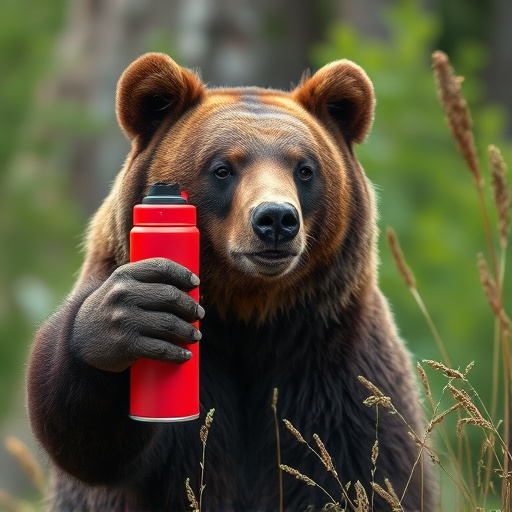Using bear spray effectively in bear country involves understanding the optimal spraying distance (20-30 feet) and specific techniques, like aiming at the bear's face and holding the canister upright. Regular training is crucial for confident and safe usage. The best bear spray distance pattern involves wide, horizontal motions starting from 20 feet, targeting the bear's eyes, nose, and mouth to disorient and blind it briefly, allowing escape or de-escalation. Practice this pattern under pressure during training for successful deterrence.
“Prepare for a wild encounter with our comprehensive guide to wilderness bear defense spray. In unpredictable environments, knowing how to use bear spray effectively can be a matter of survival. We’ll explore the ins and outs of bear spray, including its effectiveness, safety measures, and key factors that influence the best distance for application.
Learn the optimal spray pattern to maximize protection during your outdoor adventures. From understanding chemical composition to practical demonstration, this article equips you with vital knowledge for navigating potential bear encounters safely.”
- Understanding Bear Spray: Effectiveness and Safety
- Factors Influencing Best Bear Spray Distance
- Demonstrating the Optimal Bear Spray Pattern
Understanding Bear Spray: Effectiveness and Safety
Understanding Bear Spray: Effectiveness and Safety
Bear spray, also known as bear defense spray, is a crucial tool for anyone venturing into bear country. Its effectiveness lies in its ability to create a protective barrier between you and the bear, allowing time for escape or de-escalation of the situation. The best bear spray distance pattern varies depending on the type of spray and environmental conditions, but generally, it’s recommended to aim for a range of 20 to 30 feet (6 to 9 meters). This ensures that the spray reaches the bear while minimizing potential off-target impact.
Safety is paramount when using bear spray. It’s designed to temporarily blind and disorient the bear, giving users a critical few seconds to move to safety. However, proper usage techniques must be followed to guarantee optimal effectiveness. This includes holding the canister upright, aiming at the bear’s face, and releasing the trigger in one continuous stream as you back away. Regular training and familiarization with the spray’s operation are essential to ensure confidence and preparedness during a potential encounter.
Factors Influencing Best Bear Spray Distance
The best bear spray distance is influenced by several key factors, each playing a crucial role in ensuring effectiveness during an encounter. One primary determinant is the type of bear spray you use. Different formulations and concentrations create varying spray patterns, with some designed for longer-range defense. For instance, higher voltage sprays can reach further, offering protection from a safer distance.
Environmental conditions also significantly impact the best bear spray distance. Wind direction and speed can cause the spray to drift or dissipate quickly, reducing its effective range. Additionally, terrain features like trees, rocks, or thick brush can obstruct the spray’s path, minimizing its distance of coverage. Understanding these factors allows users to select the appropriate bear spray and employ it optimally during potential encounters in the wild.
Demonstrating the Optimal Bear Spray Pattern
When using bear spray during an encounter, understanding and demonstrating the optimal spray pattern is key to maximizing its effectiveness at a safe distance. The best bear spray distance pattern involves spraying in a wide, horizontal motion, creating a mist that covers a 360-degree arc around you. Aim for the eyes, nose, and mouth of the bear, as these are sensitive areas. Start spraying from approximately 20 feet (or 6 meters) away, moving closer if needed but never getting too close, as bears can easily defend themselves in tight spaces.
The optimal pattern ensures that a thick layer of spray lingers in the air and clings to the bear’s fur, temporarily blinding and disorienting it. This is crucial for providing you with a chance to retreat or defuse the situation. Practice this technique during training sessions to ensure you can execute it accurately and calmly under pressure. Remember, timing and distance are critical factors in successfully deterring a bear encounter with spray.
When it comes to protecting yourself in a wilderness bear encounter, understanding your bear spray and its optimal usage is key. By considering factors like distance and spray pattern, you can ensure maximum effectiveness during an emergency. Remember, proper training and practice are essential for safe and responsible use of defense spray. Stay informed about best practices, including the recommended best bear spray distance and optimal spray pattern, to make sure you’re prepared should you find yourself face-to-face with a bear in its natural habitat.
